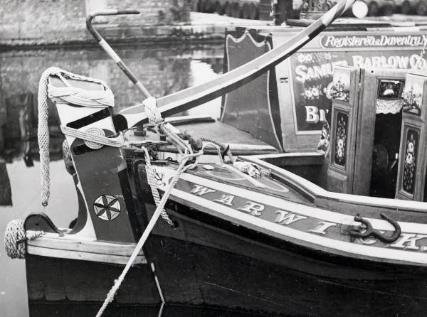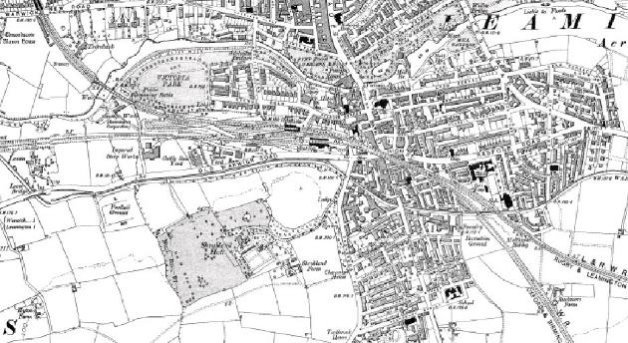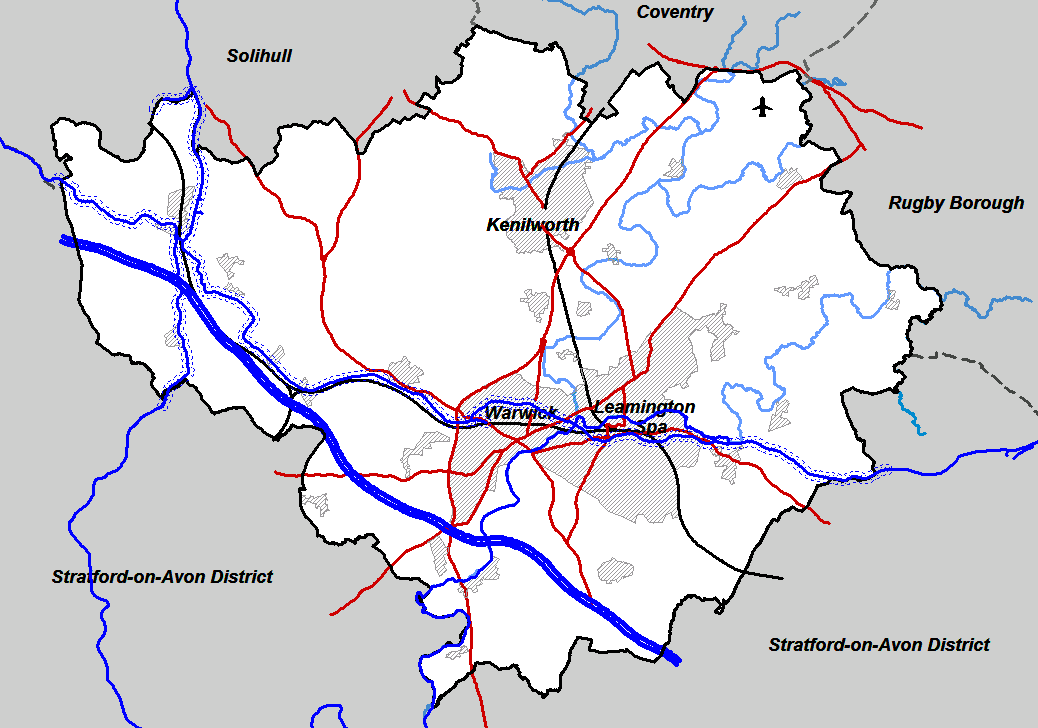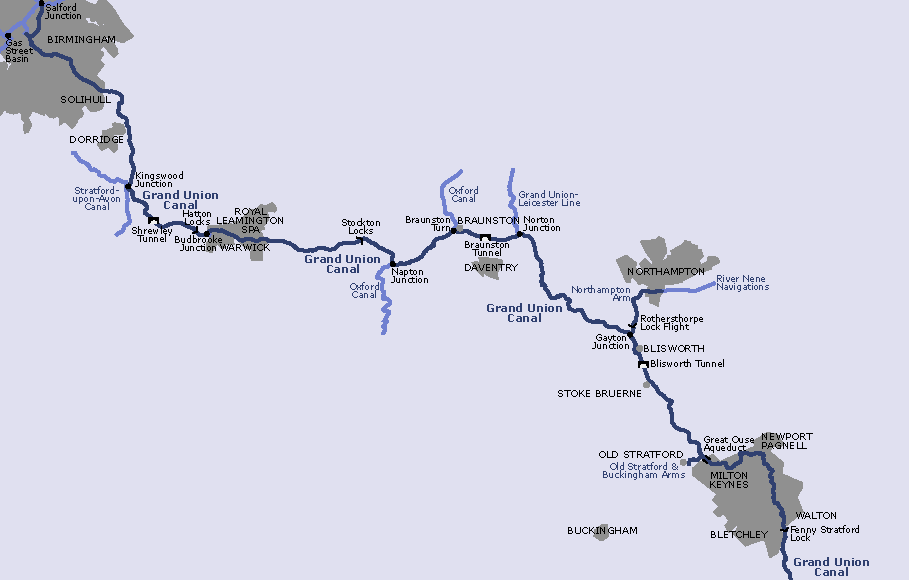Canal Conservation Area
Introduction
Background to the study
Warwick District Council Local Plan has identified that Waterways can be used as tools for place making and place shaping and contribute to the creation of sustainable communities (Warwick District Local Plan NE7). The Canal Conservation Area will assist heritage-lead regeneration, including the Creative Quarter in Leamington's Old Town, and other waterside development opportunities across the district.
An appraisal has been undertaken to explore the physical context, to understand, analyse and articulate how the eighteenth century landscape has changed and evolved and will continue to do so; why the waterway corridor is special and what elements within the area contribute to this special quality and which do not; and how to preserve and enhance what is significant. The appraisal explains the influence on the district's development, identifies what is distinctive, and provides an evidence base for analysis of significance. The physical extent of the canals through Warwick District means the character of the area is diverse, where imitative or 'in keeping with existing' approaches would run counter to the way in which the area has traditionally evolved. Informed design guidance and site-specific development briefs that encourage new development that complements the character, while making a positive contribution to the significance of the conservation area can draw on this appraisal.
Methodology
Assessment of the network and its setting
- A physical appraisal of the current state of the canals and their environs
- Desk research to understand the evolution from the canal acts in 1793 to today, resources include the Heritage Environment Record . Warwickshire County Record Office, WCC landscape sensitivity studies
- Discussions with Canal &River Trust, Historic England, local history groups and other key stakeholders
- Define heritage values, landscape character and appropriate boundaries Output - An illustrated appraisal document to explain the canals significance
- Identify the special interest
- illustrate character and appearance of lengths
- Summarise the legislation and policy guidance
- Identifies vulnerabilities and opportunities for enhancement
Conservation is a creative activity to find solutions that conserve historic places and applying cultural values that continue to apply to the future. Evaluating the historic environment involves understanding how the past is encapsulated in today's landscape, explaining why it has assumed its present form and distinguishing its more significant elements, including the social and cultural circumstance that brought it about. The relationship forged with the eighteenth century landscape by the original engineers design has changed and evolved and will continue to do so, reflecting what happens adjacent to the waterway and within its aspect. The NPPF highlights that the setting of a designated heritage asset can contribute to its significance. Settings may also be nested and overlapping. .Legislation recognises that change created the canal as a historic place, and that managing change is essential to the waterway environment realising its full potential in the future.
Covering the area methodically and combining this with an analysis of historic maps, gives a sense of how and why a place has come to look the way it currently does; of the relationships of buildings to open spaces, and of residential to commercial or industrial places; the evolution of transport infrastructure; views in and out of confined spaces; building scale, type, materials, current use, and other related factors that shape how it is experienced now, was in the past and might be in the future. The appraisal encourages a longer perspective and a balanced response to change as part of a holistic approach to heritage.
Consultation
It is always valuable to involve the community in place making investigations. Using local knowledge, they can direct the attention of officers to townscape, landscape and heritage assets that are valued by particular communities, but which may not have been as yet recognised by, for example, having been listed. The professionals can then place these assets in a wider value context, given their ability to draw upon experience of working further afield. Any understanding of context requires knowledge of history and culture, specifically directed towards the assessment of historic significance, in practice it is linked to an analysis of the quality of the townscape and the relation between the evolution of settlements and their townscape/landscape context. It is important to understand the existing character of places, and how they have developed through time, as a starting point for planning future change.
Development proposals that affect the historic environment are much more likely to create successful places if they are designed with the knowledge and understanding of the significance of the heritage assets they may affect and the contribution of its' setting to its' significance. The canal is an historic structure that has shaped the local environment. This appraisal is a review of what is there, how it came to be, and how it might change. The objective is to ldentify and describe 'character length', assess their relative historic and design importance, and provide an evidence base for the retention of distinctive character.
Most of the buildings in a conservation area will help to shape its character. The extent to which their contribution is considered as positive depends not just on their street elevations but also on their integrity as historic structures and the impact they have in three dimensions, perhaps in an interesting roofscape or skyline. To identify the significance of a place, it is necessary first to understand its fabric, and how and why it has changed over time; and then to consider: who values the place, and why they do so; how those values relate to its fabric ; their relative importance; whether associated objects contribute to them; the contribution made by the setting and context of the place. The nature of canals is that there are many communities of interest in addition to boat owners and those who live in the locality.
What matters and why? - is the key question to what people value in a locality. Both positive and negative characteristics of a place can be used to establish what is valued or has significance. Explaining what has happened before and what might, breaks out of looking just at what is immediately obvious. Heritage values represent a public interest in places, regardless of ownership. The use of law, public policy and public investment is justified to protect that public interest. Advice and assistance should be available from public sources to help owners sustain the heritage in their stewardship and to guide intelligent and imaginative architectural approaches that can be applied to new buildings to enrich historic environments. Innovation is essential to sustaining cultural values in the historic environment for present and future generations, but should not be achieved at the expense of places of established value.
The local waterways link historic towns with the countryside beyond. Also an ecological resource, they provide open access to a landscape of character for the many residents who do not have their own garden, want to walk, jog or cycle along the 40 Km of Canal in Warwick District. By realising the potential of this heritage asset, increasing safe use and enjoyment, the Conservation Area initiative will enhance the health and wellbeing of Warwick's residential population by promoting the intrinsic value of this significant local asset; share in stewardship of this legacy, responding to the range of communities of interest that engage with this distinctive part of the public realm, thus contributing to broaden community, cultural, and civic life.
The approach to the appraisal draws on Conservation Principles, Policies and Guidance that recognizes the wide range of heritage values. The weight given to heritage values should be proportionate to the significance of the place and the impact of the change upon the special architectural or historic interest, the character or appearance of which, it is desirable to preserve or enhance. The intention is to help everyone involved to take account of the diverse ways in which people value the historic environment as part of their cultural and natural heritage.

www.ourwarwickshire.org.uk/ is a source of local photographs on line.
The county record office holds many documents http://archivesunlocked.warwickshire.gov.uk/calmview/
Another key informative is the Warwickshire historic map record. This allows the map regression technique, whereby you analyse change from the recorded map bases, to be carried out in a dynamic way, with current maps fading into historic maps, so that specific locations can be looked at in detail, but also how the overall structure of the place has evolved to be identified. The maps start with the 1880 ordnance survey, the links are
http://maps.warwickshire.gov.uk/historical/

The 1830 mapping is available from the Australian library web site
http://nla.gov.au/nla.obj-231917049/view This is the Australian library map source.
http://heritage.warwickshire.gov.uk/archaeology/historic-environment-record-enquiries/
WCC Heritage Environment Record is a first step for any comprehensive enquiries about a location.

Waterways in Warwick District
Stratford upon Avon Canal 1795
Warwick and BirminghamCanal1793 - since 1929 part of the Grand UnionCanal
Warwick and NaptonCanal1794 - since 1929 part of the Grand UnionCanal
This appraisal provides a detailed assessment of the special character of the Warwick Canalside Conservation Area and provides guidance to try to ensure this special character is 'preserved or enhanced'. The historical development explaining how the canals left their mark on the modern-day layout and appearance of the settlements and rural parts of Warwick District is summarised, and links to more detailed sources on canals and their role in changing the country.
To enable a comprehensive and clearer analysis of the townscape, the district's canal network has been divided into seven 'character' lengths, looking at historic development of that part, building type, uses and activities, links, spaces, trees and the public realm and open spaces which together make a special contribution to the 'sense of place'.
Covering the canal corridors methodically and combining this with an analysis of historic maps and key reference sources, one can gain a sense of how and why a place has come to look the way it does and the significance of the evolution of transport infrastructure. This shows what is distinctive about the building scale, type, materials, current use, and other related factors. It also seeks to o identify views in and out of the canal space and explores the setting.a key aspect being the relationships of the network to open spaces and to built form. This approach identifies the character of the area under review, and helps to address issues that may threaten to change that character, such as the redundancy of particular uses and therefore building types, planning issues concerning sustainability, density, high-quality design for new build, permeability, access, transport, the appearance of the public realm, the balance of 'hard' and 'soft' elements of the environment emerge.
From the detailed assessment of each character area, a range of 'Issues' and opportunities have been identified which provide the basis for the guidance which will enhance local plan policy and make a number of recommendations for the future preservation and enhancement of the Conservation Area. These are based on good conservation and regeneration practice for waterways. 
It is important to understand the significance of an historic asset and the possible impact of a proposed development on this significance
Principle 1: The historic environment is a shared resource
Principle 2: Everyone should be able to participate in sustaining the historic environment
Principle 3: Understanding the significance of places is vital
Principle 4: Significant places should be managed to sustain their values
Principle 5: Decisions about change must be reasonable, transparent and consistent
Principle 6: Documenting and learning from decisions is essential.
Conservation areas exist to protect the features and the characteristics that make a historic place unique and distinctive. They were introduced by the Civic Amenities Act 1967. Designation imposes a duty on the Council to pay special attention to the desirability of preserving or enhancing the character or appearance of the area. In fulfilling this duty, the Council does not seek to stop development, but to manage change in a sensitive way, so that those qualities which warranted designation are sustained and reinforced rather than eroded.
